New technologies and trends continue to push the envelope for B2B marketers. Here’s a look at some of the digital marketing trends and technology developments to watch in 2020.
Interactive content
We know that consumers like to interact with websites, with interactive content like polls, quizzes, games, and calculators. Do B2B customers want this kind of interaction – or just the facts? Well, it turns out that B2B prospects and customers enjoy interactive content almost as much as B2C. Interactive content invites prospects to engage with your company, in an easy, no-obligation way, and delivers a reward for the interaction.
Good ways to engage B2B audiences on your website with interactive content include assessments and calculators. An assessment featuring a brief set of questions can direct a prospect to the right solution type, and provide you with valuable data. Or you can offer a calculator to show how much your prospects would save if they implemented your product. HubSpot offers a quick ROI calculator, which lets users see how much they’d gain by implementing HubSpot’s inbound marketing software. The “reward” for entering four numbers into the HubSpot calculator: a dollar figure for how much the user would gain along with a sharable set of customized bar charts. It’s fast and easy (and anonymous, no email signup is required), but it gives the participant real insight into the benefits offered by HubSpot.
Landing page optimization
Landing pages don’t always get a lot of attention in the campaign planning process. Some marketers assume that if a prospect makes it to a landing page, the conversion is complete. But a poorly-designed landing page can break the flow and turn a prospect away. That’s why landing page optimization is moving up the radar as a critical component in any marketing campaign. Good landing pages follow these guidelines:
- Offer a single Call-to-Action. Don’t make it confusing by offering multiple options. Whether it’s a newsletter sign-up, to book a consultation, or to register for a white paper, offer a single action only.
- Use a headline that’s simple and short. “Sign up here” or “Book a consultation.” The same goes for your body copy. Keep it short, and use bullet points to showcase the benefits of taking the suggested action. If your audiences have different information needs, or have different levels of familiarity with your products, design landing pages for each audience group, rather than clutter your landing page with too much detail.
- Include a thank you and a suggested next step. After you thank the respondent, direct them to a desired next step. “For more info on [product name], click here.” Or “To see a list of all of our white papers, click here.” Don’t leave them with nowhere to go.
Augmented reality
Augmented reality (AR) adds an overlay of digital information to an image or setting in real time. Unlike virtual reality, which requires users to put on a clunky headset, AR apps offer a simpler way to showcase “virtual” concepts and solutions. You can use AR on a tablet, smartphone or desktop computer screen. Some examples of companies that are already using it include paint and furniture companies, who offer online AR apps to show users how their living rooms might look with walls painted a different color, or how a new table might look in their dining room, for example.
For B2B, uses for AR include AR-enhanced marketing tools on tablets or smartphones, which sales can use to show prospects how a solution will look and feel, right in the location where it would be used. An office furniture company could show customers how a furniture refresh would actually look at their premises, or a medical device company could show how new diagnostic equipment would fit into a customer’s current set-up. AR can be used to showcase the product itself, offering a 360° perspective on a product right in the customer’s own office, allowing them to explore different aspects of a product, or even to enable custom product design.
At Living Stone, we’re specialists in digital marketing. Whether you want to generate leads, increase sales revenue, build awareness or educate your audiences, we can help you to achieve your marketing and communications goals. If you’d like to learn more about optimizing landing pages, using augmented reality in your marketing tools, or adding some interactive content to your website, contact us at info@livingstone.eu.
Up next in our blogpost series on key B2B marketing trends for 2020: the future of content marketing.



